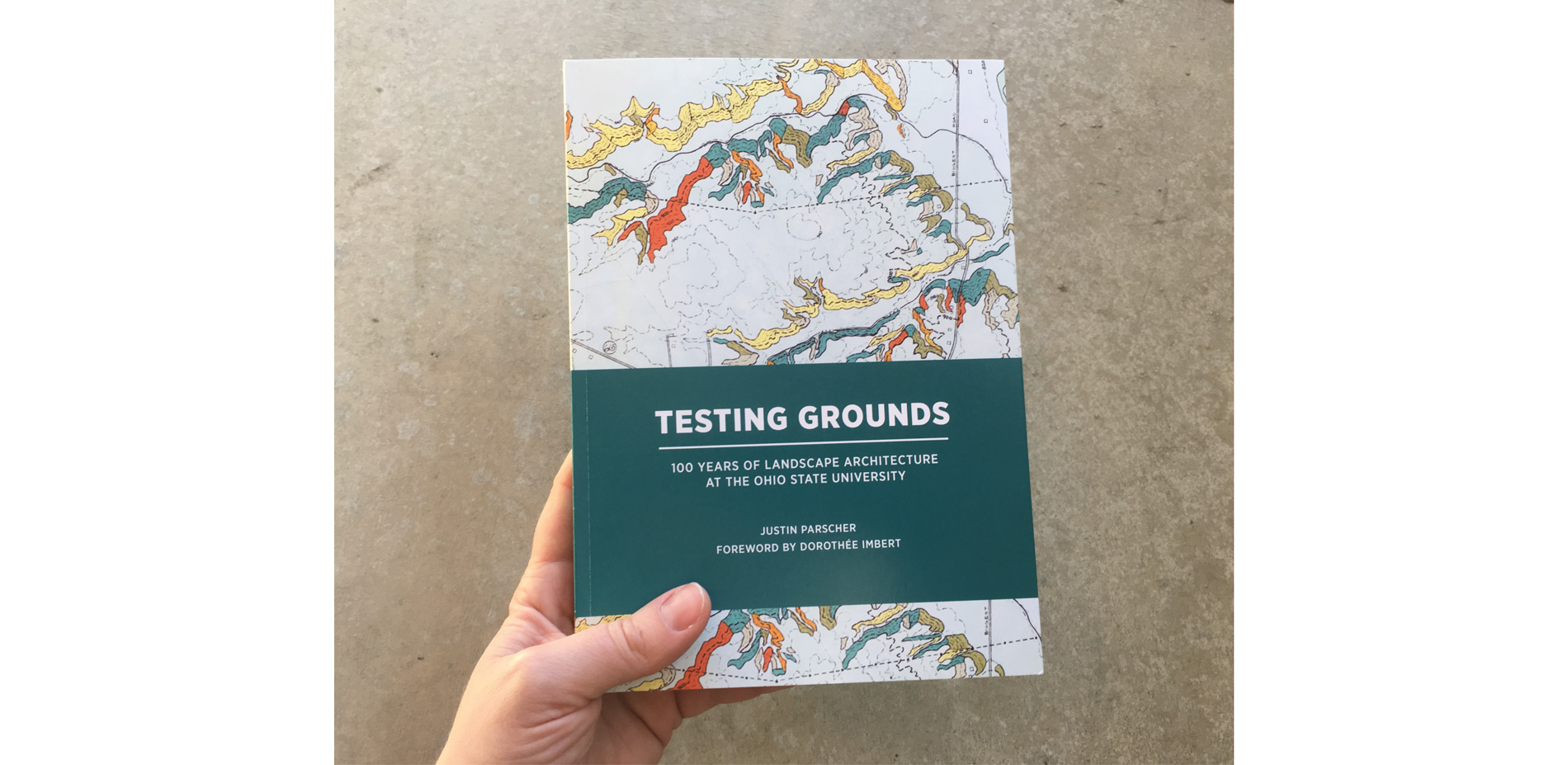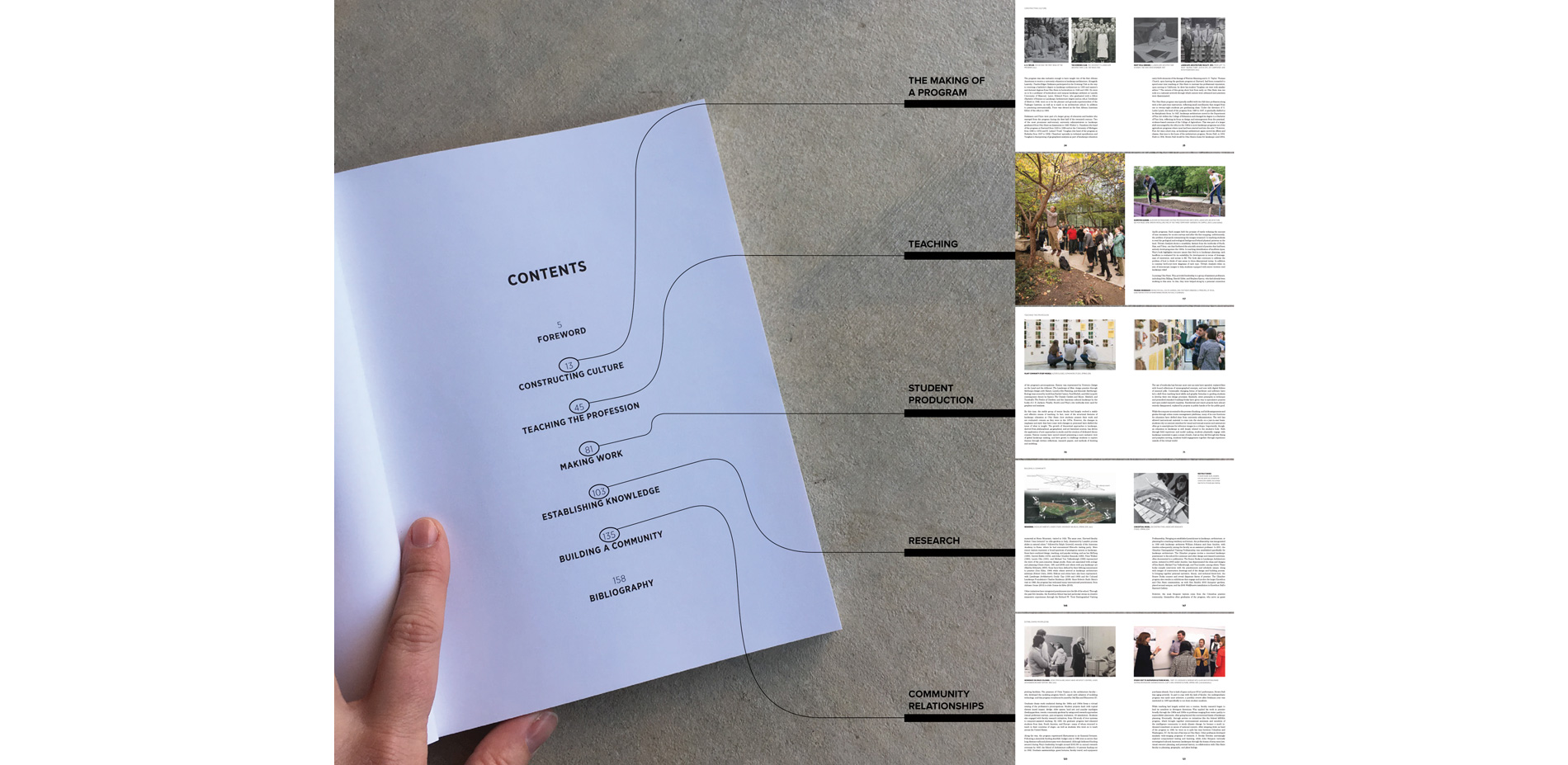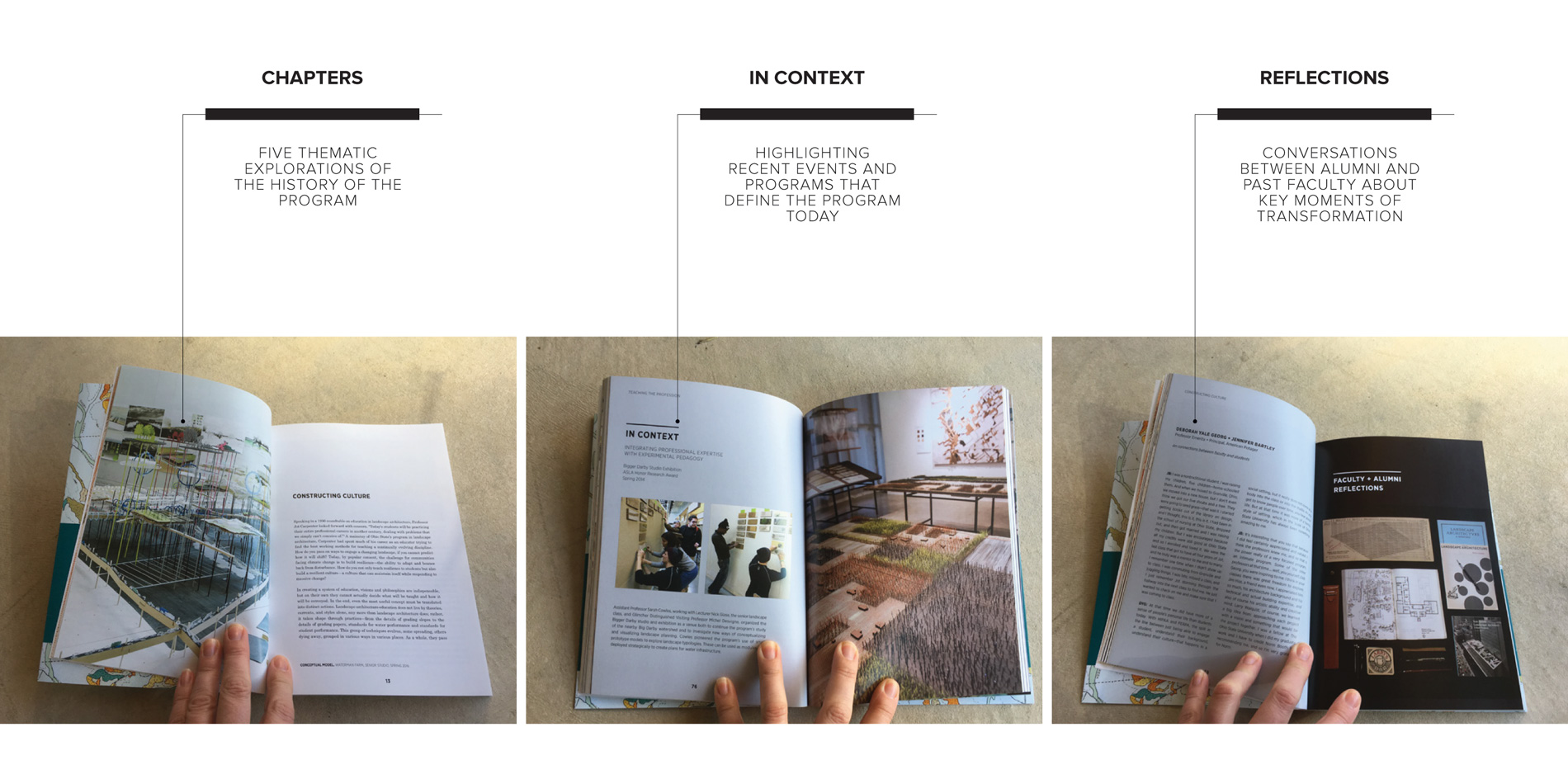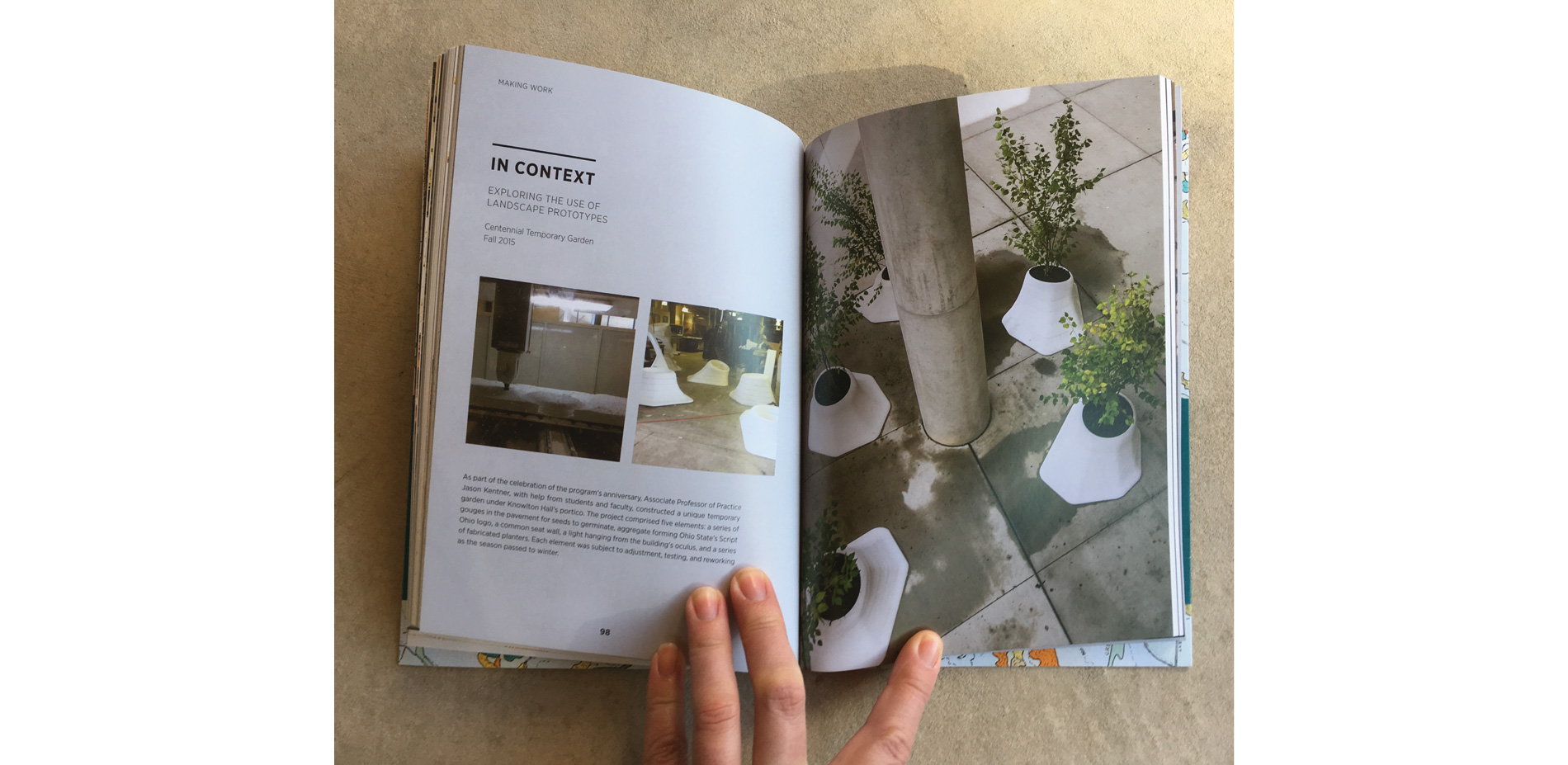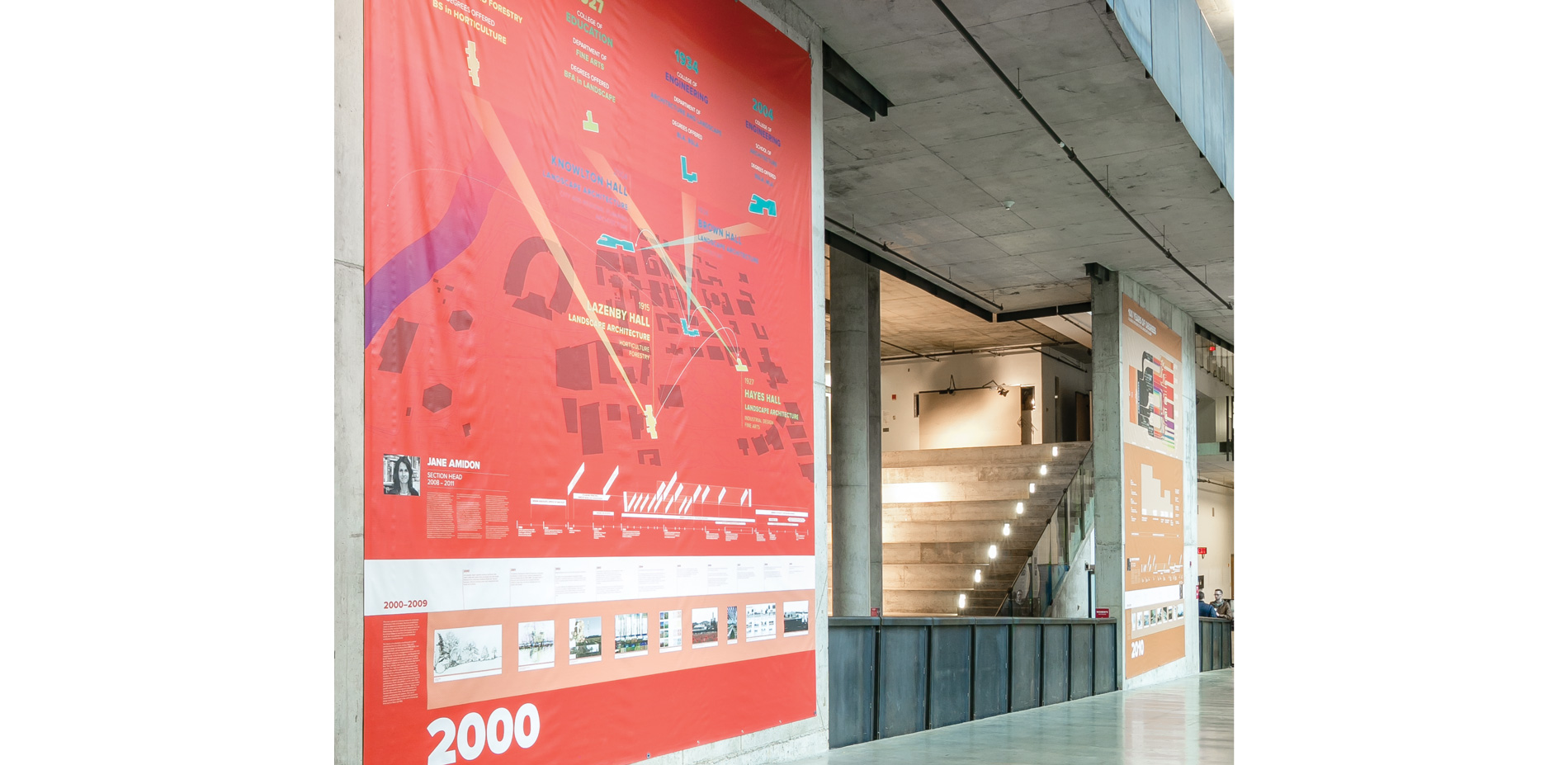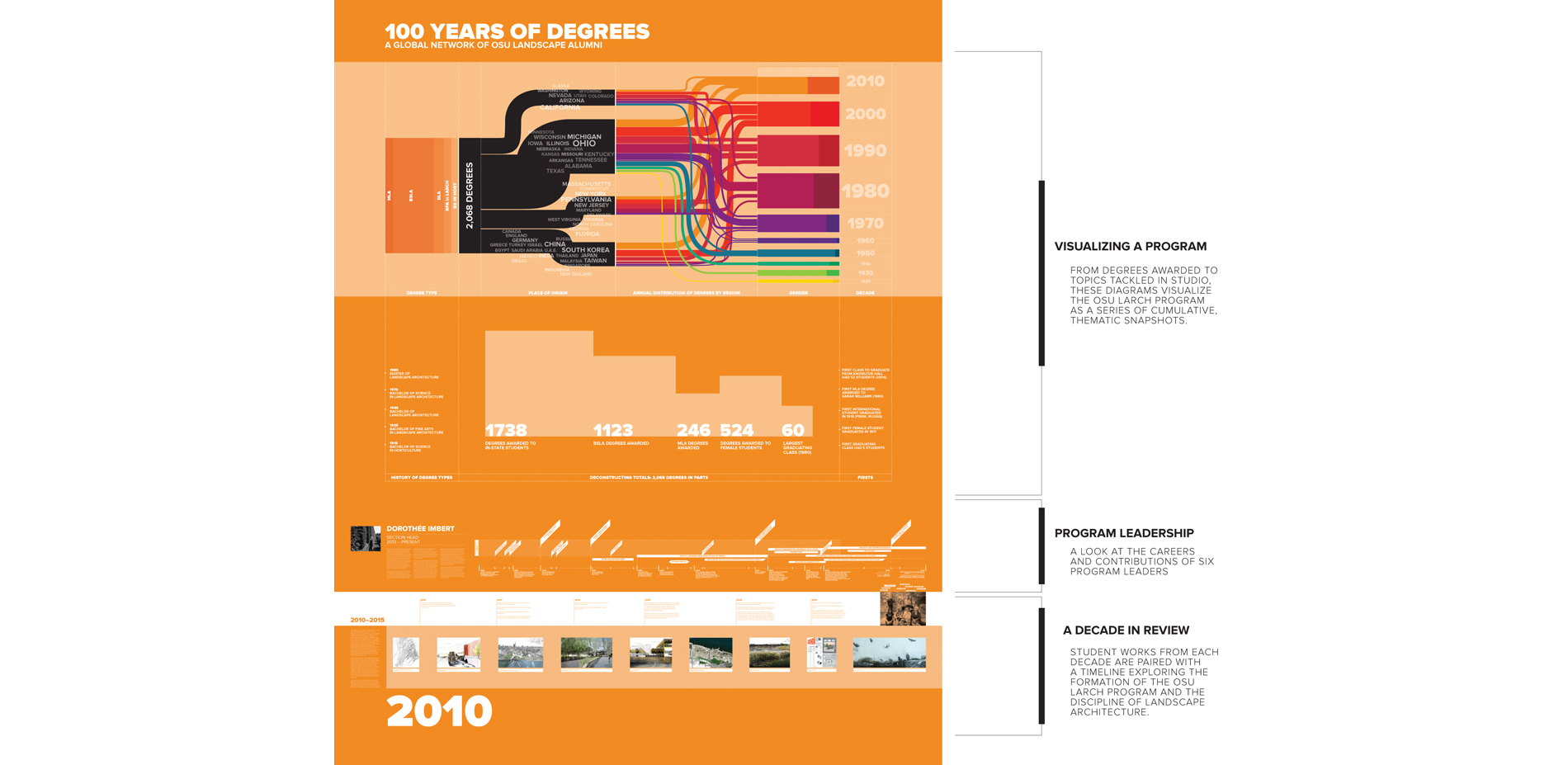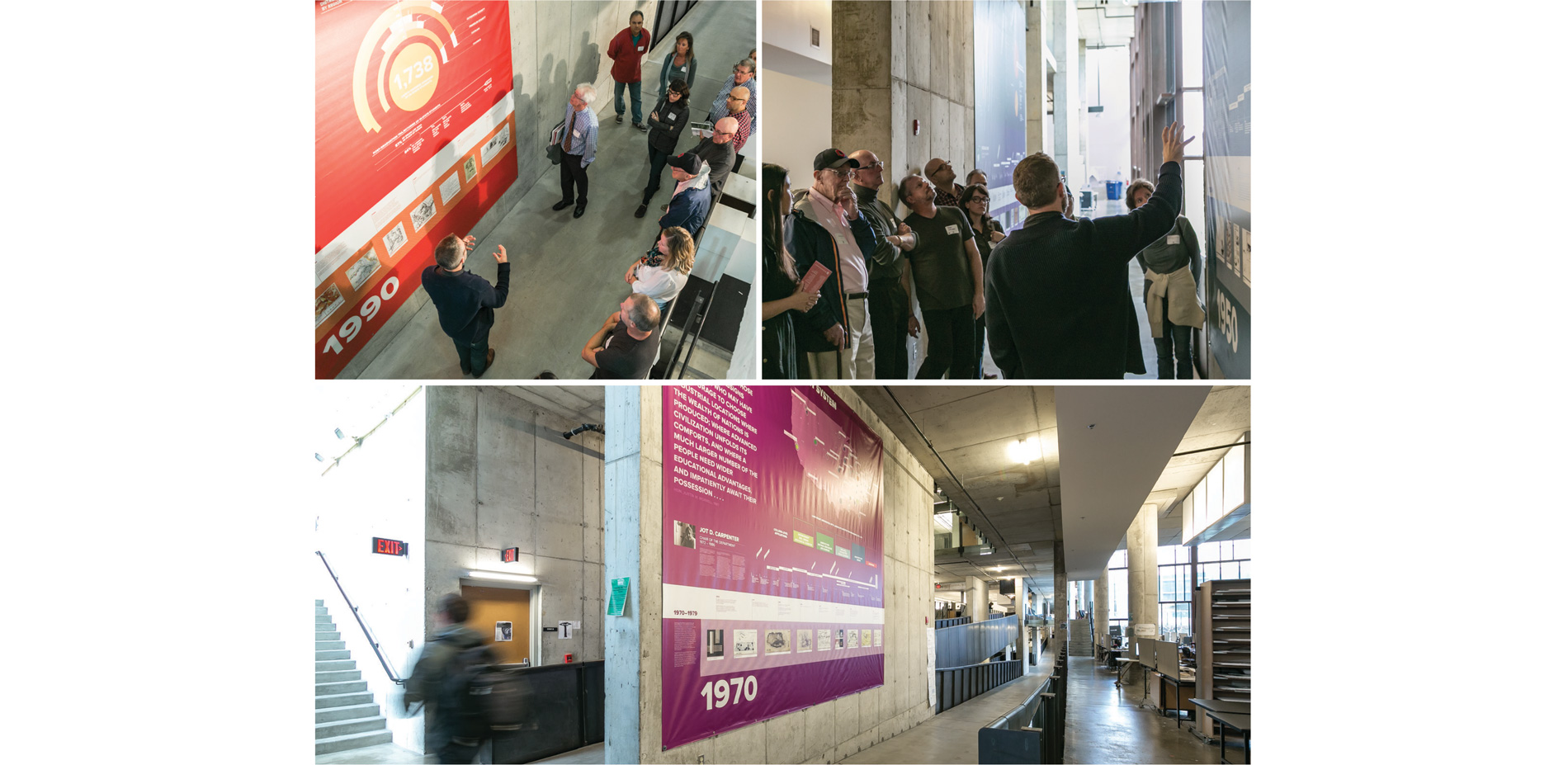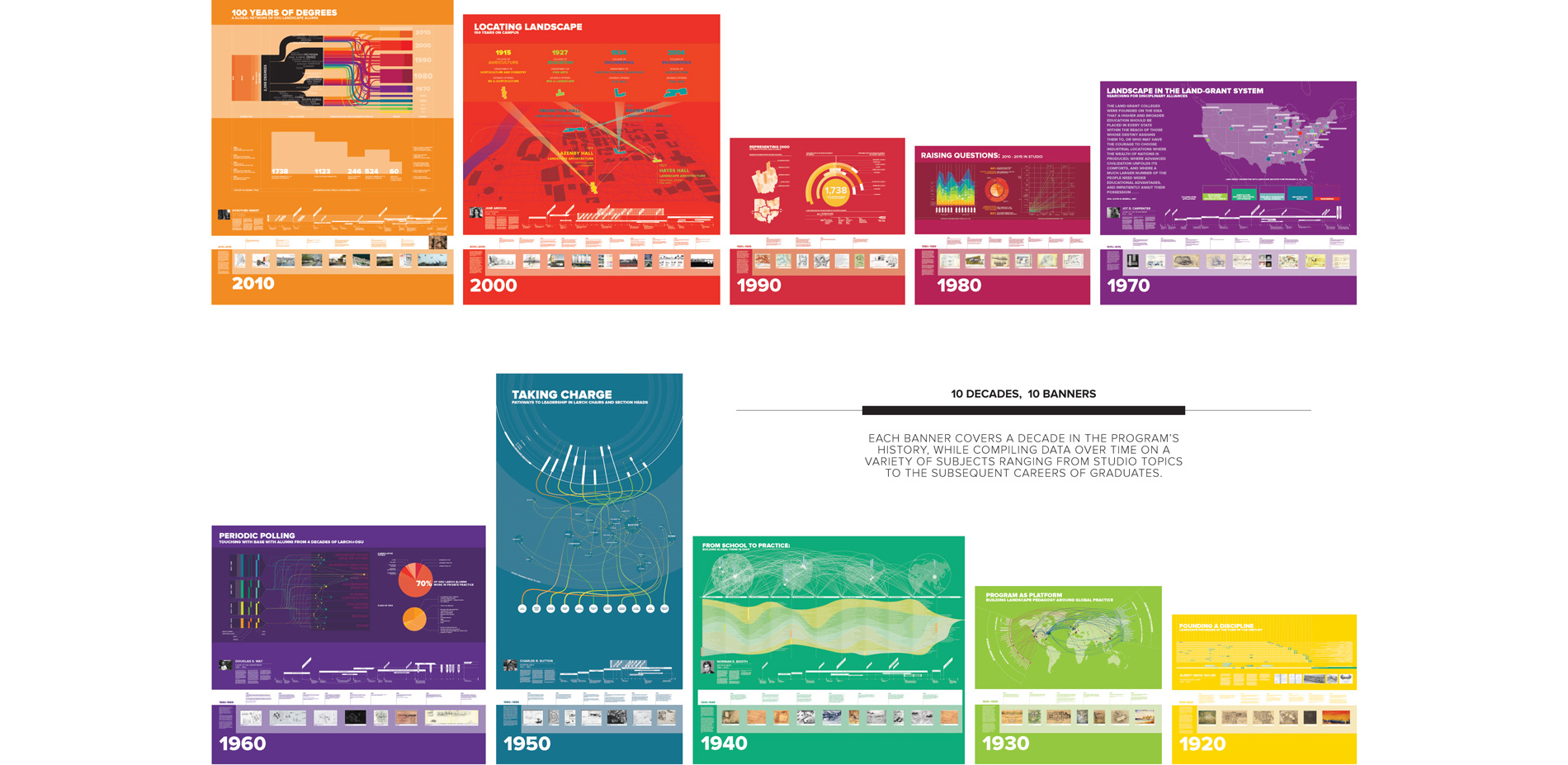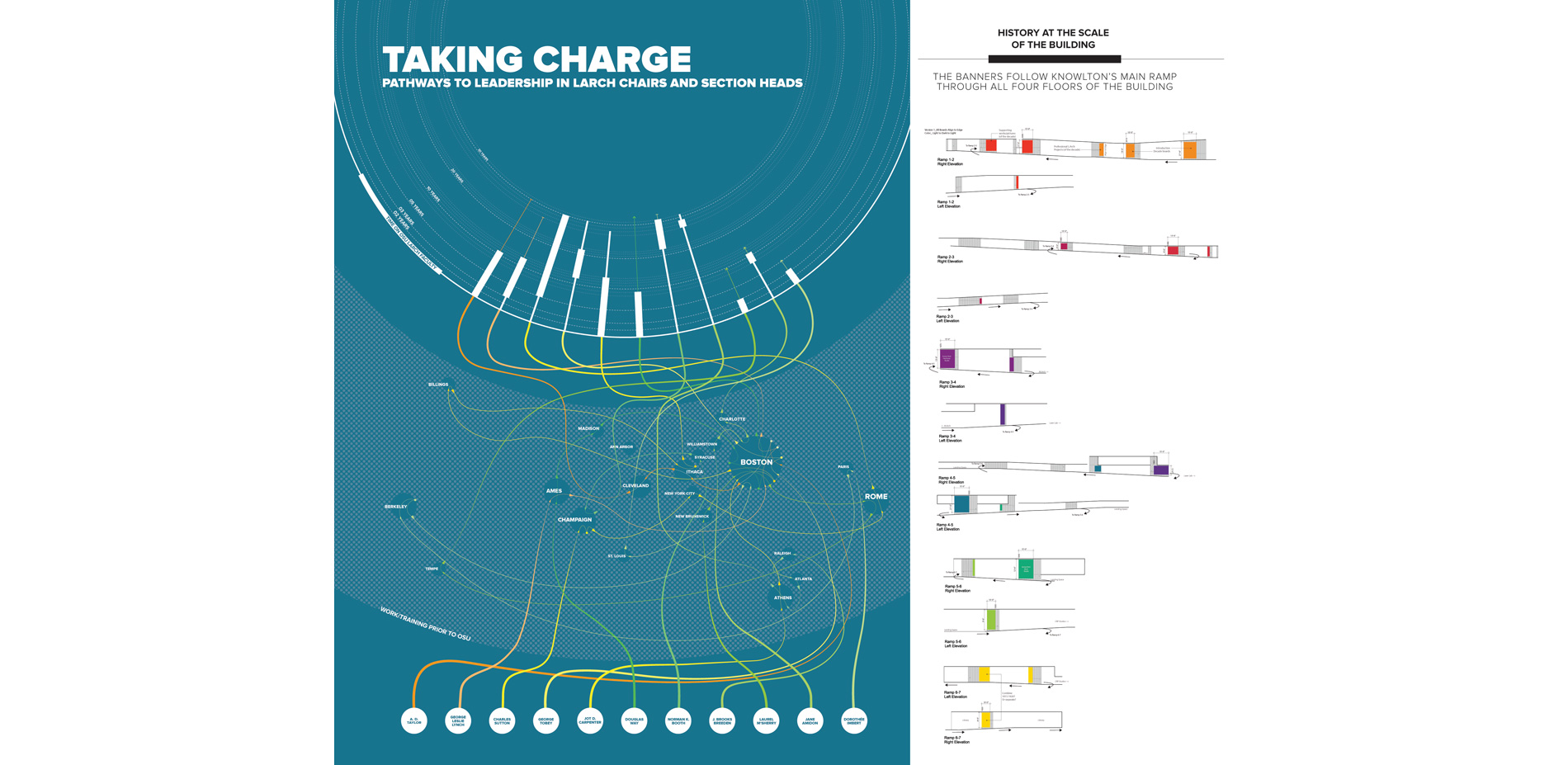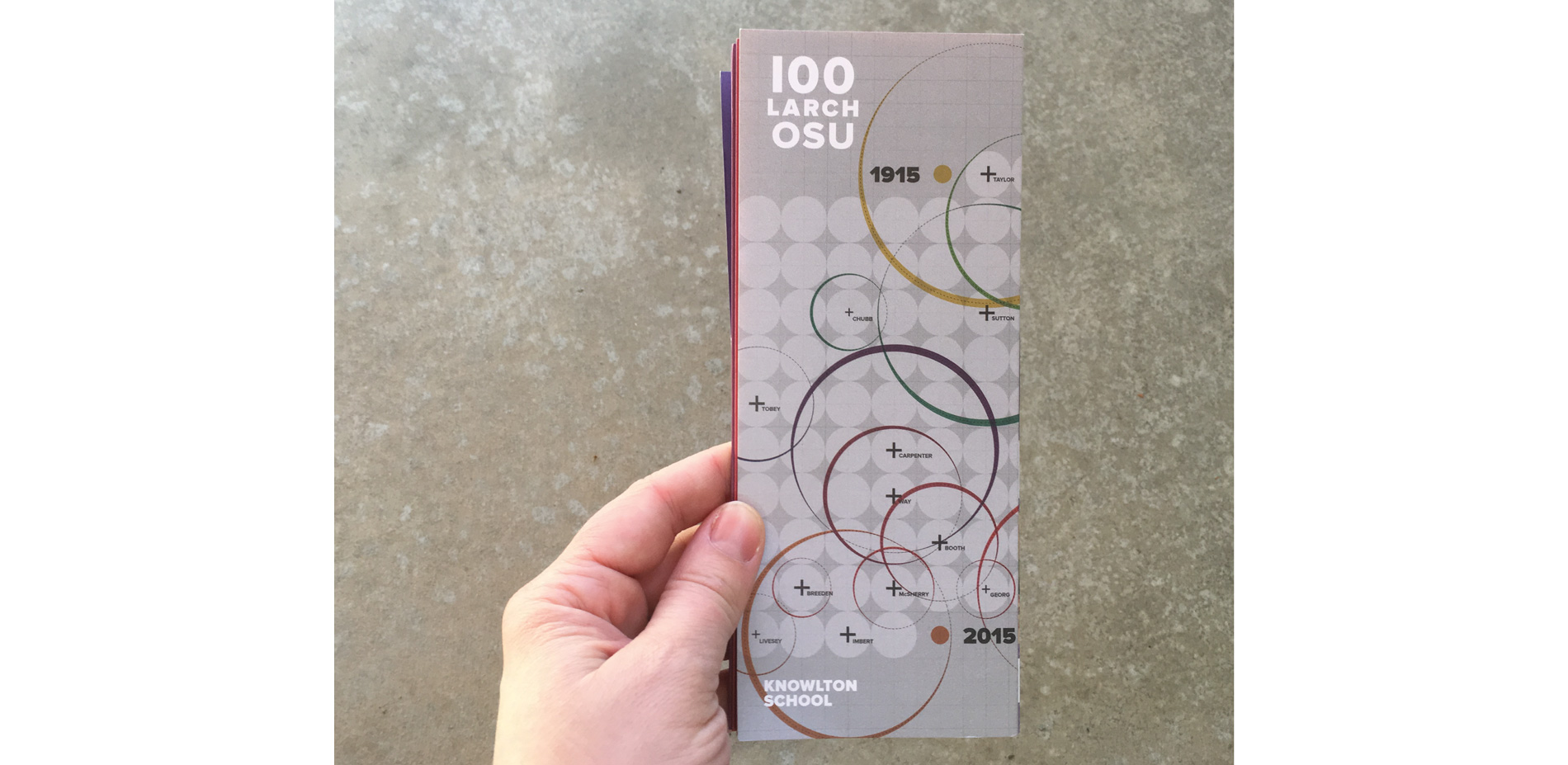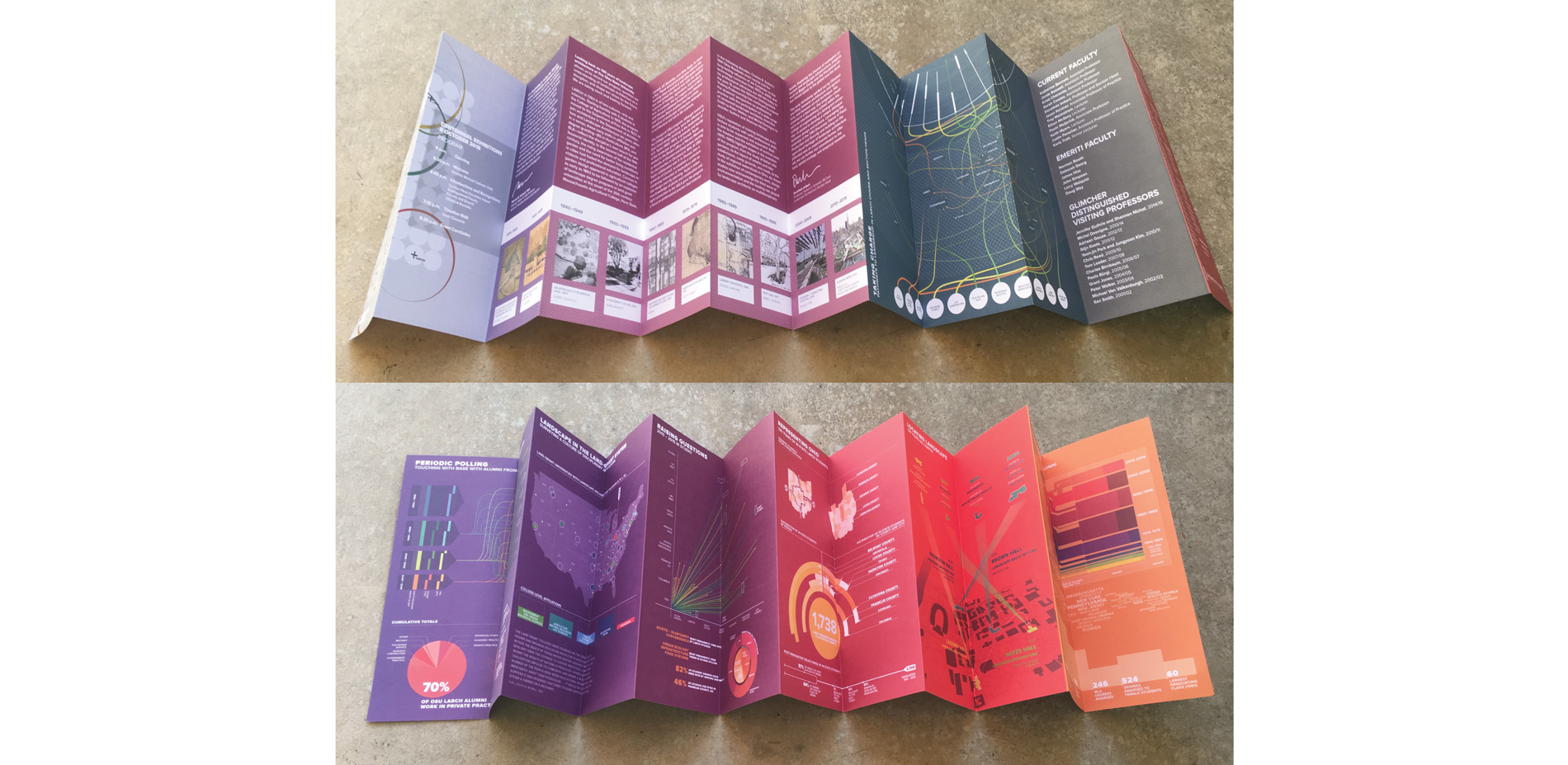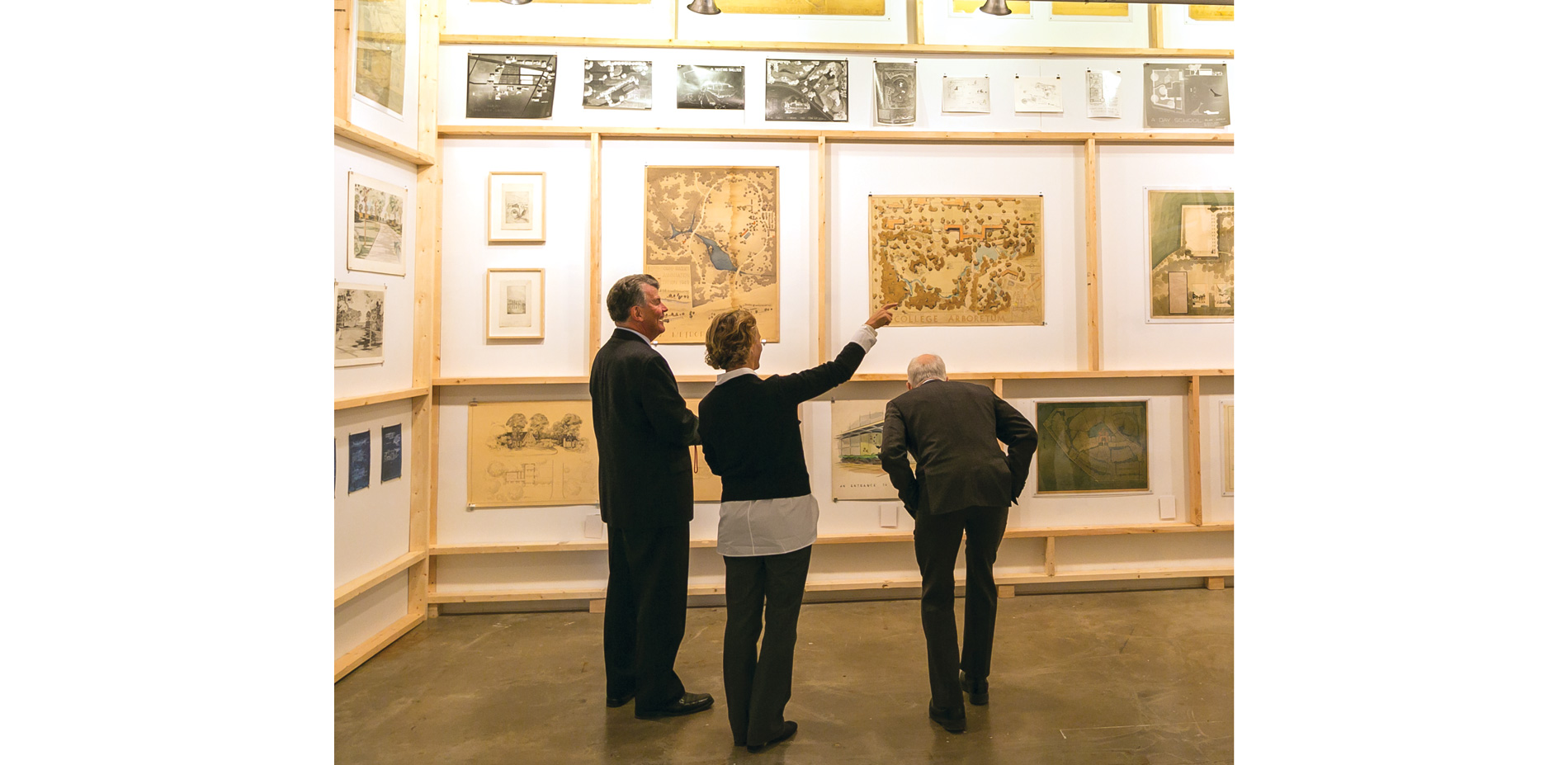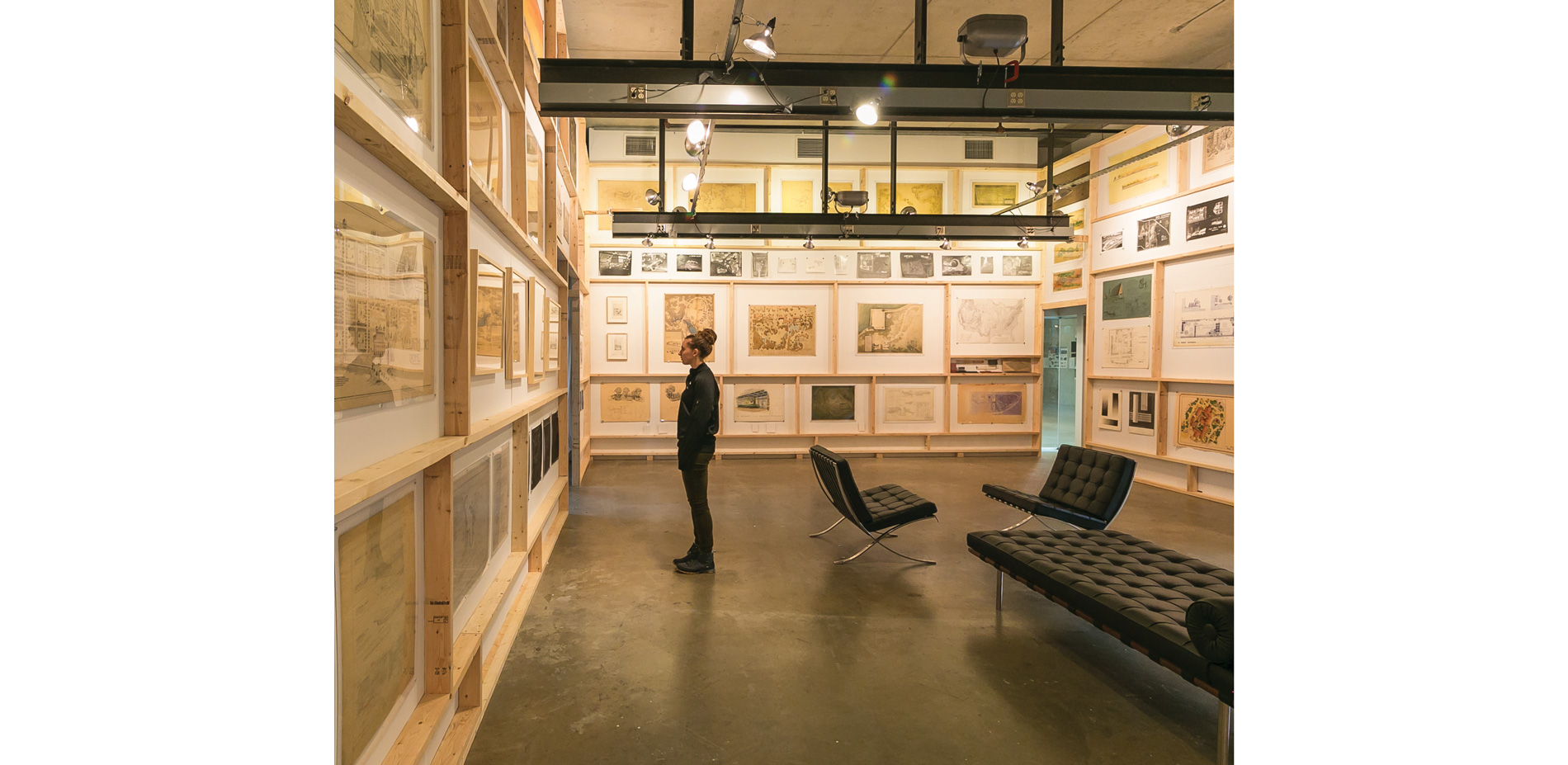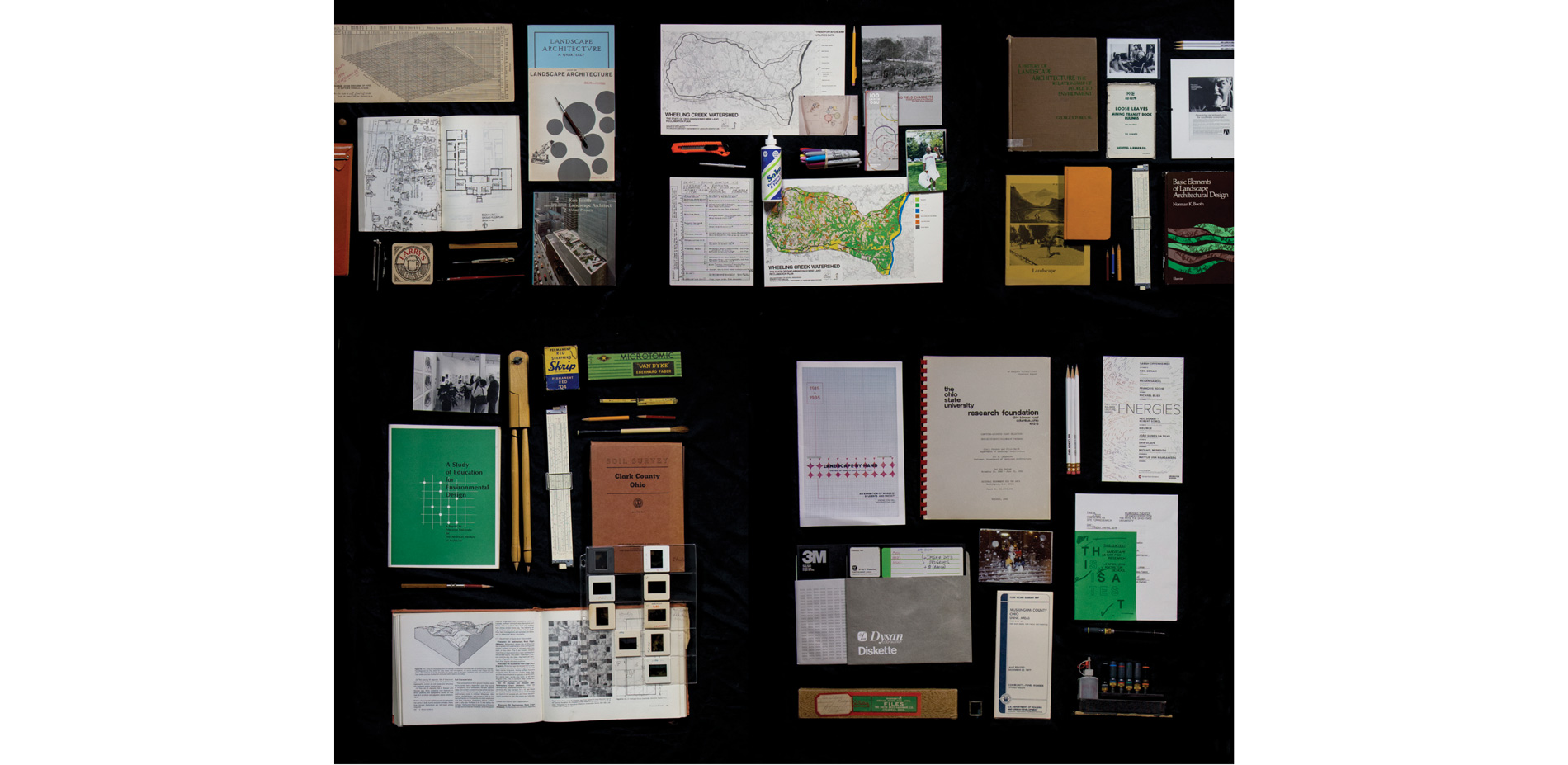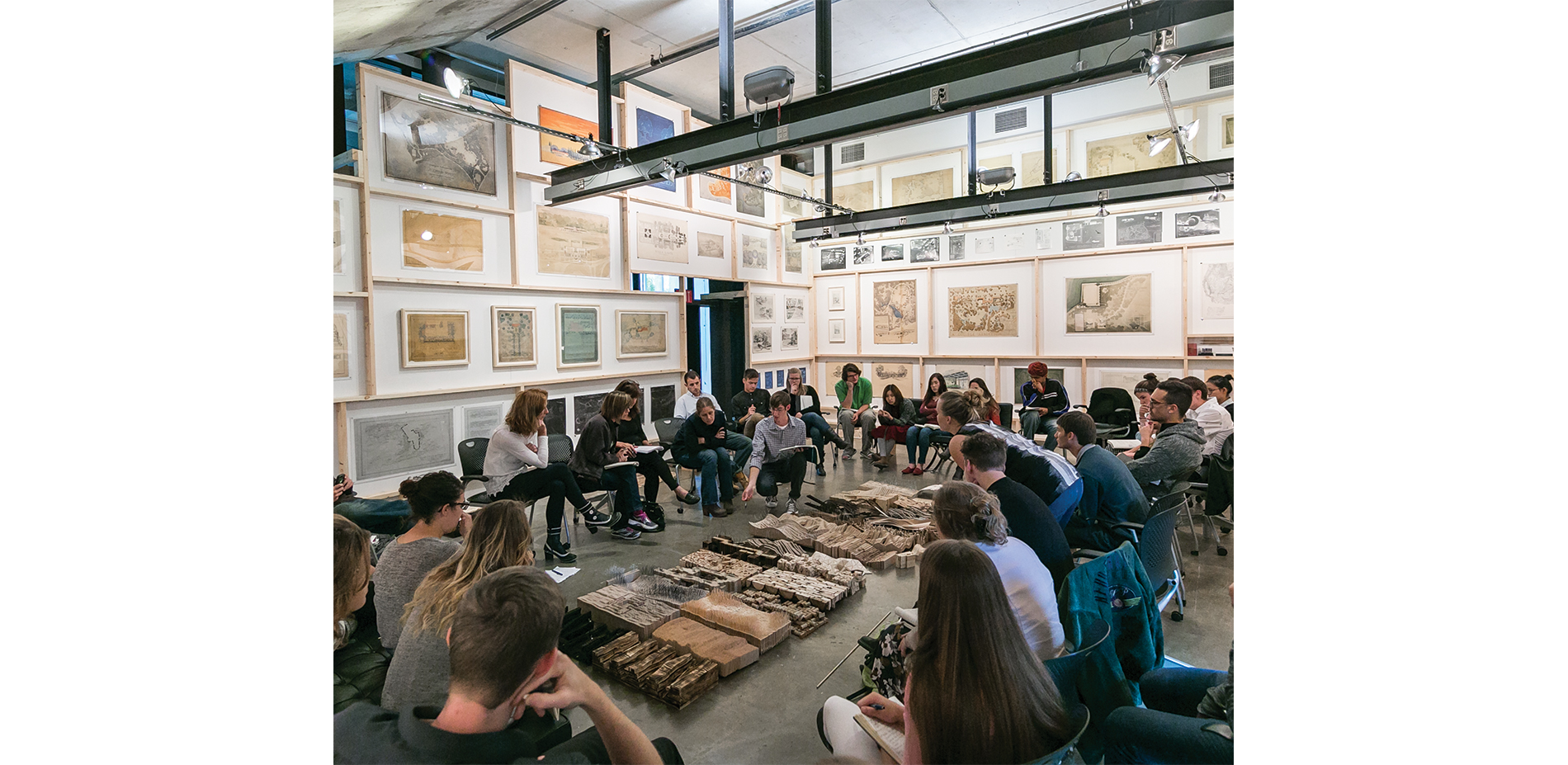100 Years of Landscape Architecture at The Ohio State University
AWARD OF EXCELLENCE
Communications
Columbus, OH, USA | Landscape Architecture Section, Knowlton School, The Ohio State University
I'd like to see what their enrollment was after this project. What a tool!
- 2018 Awards Jury
PROJECT CREDITS
Project Credits
- Philip Arnold
- Thierry Beaudoin
- Jacob Boswell
- Joie Chan
- Kristi Cheramie
- Sarah Cowles
- Deborah Yale Georg
- Dorothée Imbert
- Karen Lewis
- Justin Scherma Parscher
- Alex Pisha
- Karla Trott
PROJECT STATEMENT
Beginning in 2015, the landscape architecture program of The Ohio State University launched a multi-part initiative to celebrate its centennial. Forming around a common theme of making, the initiative gathered archival material and crafted new objects to tell the story of the program. The result helped bring together a community in transition, and provided an innovative look at the profession's history through the institution that has reliably represented its heart.
The initiative comprised four interwoven projects. First, a series of informational banners were installed throughout the program's home of Knowlton Hall. These banners were translated into a brochure of infographics for alumni, prospective students, and friends of the program. An exhibition collected 100 years of the program's student work. Finally, the program gathered its history in a book, published in 2017 as Testing Grounds: 100 Years of Landscape Architecture at The Ohio State University. The title points to a major theme for each piece: Ohio State's position as a bellwether of the landscape profession and academy, a site where new practices are tested and perfected.
PROJECT NARRATIVE
2015 marked a watershed year in the history of landscape education at The Ohio State University, as the program marked its 100th year. The program had recently undergone a series of dramatic shifts, moving into the new Knowlton Hall in 2004 and transitioning from a long-serving group of senior faculty to new leadership under Professor Dorothée Imbert and a new faculty cohort. To mark the centennial milestone and create a common platform for reflection for the entire community around the program, a group ranging from emeritus faculty to current undergraduates were convened to study and represent the story of the first hundred years.
The first element appeared in the fall of 2015, a series of ten banners representing each of the ten decades of the program along with an eleventh banner introducing the exhibit and presenting a cumulative timeline of the program's leaders. Designed by Associate Professor Kristi Cheramie with contributions by Imbert, Assistant Professor Jacob Boswell, Assistant Professor of Practice Justin Scherma Parscher, Senior Lecturer Karla Trott, and Associate Professor Emerita Deborah Yale Georg, each banner combined super-sized informational graphics meant to reach throughout Knowlton Hall's multi-story central space. Since the entire space of Knowlton Hall can be traversed through a continuous series of ramps, the banners were arranged to be viewed in sequence throughout the building on adjoining walls. Banners varied in size depending on the size of their niche, from 9'x10' to 15'x22'. The banners aimed to tell stories at multiple scales: to be read closely and in sequence while walking the ramps, to be read as discrete stories about key program leaders, or to be viewed from afar as a series of thematic snapshots into the program.
At the same time, the group worked on the creation of the exhibit Landscape by Hand, showcased in the school’s Banvard Gallery. The exhibition, curated by Georg and graduate student Alex Pisha presented more than one hundred drawings from the program's first eighty years. The installation, designed by visiting faculty Thierry Beaudoin and built with the assistance of Philip Arnold and a team of graduate students provided a stunning framework for the display of archival drawings and tools. In turn, high-quality scans and metadata for each image were incorporated in the school website. As with the banners, the exhibit served as a venue to engage visitors and to fire the imagination of current students, with classes and reviews held within the space.
Knowing that the immersive format of the banners would be difficult for visitors to take away with them, the group needed a more portable supplement. Cheramie condensed the banners' infographics into a handheld brochure that could be given to visitors and prospective students. A print run of 1,000 was ready for a special launch event in 2015, where a community of friends of the program convened at Knowlton Hall to celebrate the centennial, see the collected exhibits, and honor Professor Emeritus Larry Walquist with the announcement of a new endowed scholarship in his name. Visitors were greeted by a temporary garden created by Associate Professor of Practice Jason Kentner with a team of student fabricators, along with a more contemporary exhibit brought together by Cowles and Trott presenting more recent student work produced through digital means.
Finally, Assistant Professor of Practice Justin Scherma Parscher wrote Testing Grounds: 100 Years of Landscape Architecture at The Ohio State University, with a foreword by Imbert. Parscher worked with Associate Professor of Architecture Karen Lewis, who designed the book and managed its production in a print run of 1,500. The work, not commercially available, is meant to be a vehicle for engagement with alumni, friends of the program, and potential students, and can accompany faculty to outreach and recruitment events. It is also a resource for current students to become acquainted with the program's history and philosophy as a a middle way between artistic excellence and engaged practice, reconciling a cosmopolitan view of landscape creativity with the practical land grant mission of service to Ohio.
The book's main narrative is divided into five historical studies that trace the program to the present. The first chapter, "Constructing Culture," focuses on the creation of the program by Ohio practitioner A.D. Taylor as a means to spread the young profession of landscape architecture. To do this, the young program disseminated not only conventions of design and representation, but also the cultural framework around design, transmitted through study tours, lecture series, and activity clubs. Taylor was a key innovator in areas of professional practice from model-making to construction detailing, and his emphasis on testing and broadcasting material practices carries throughout the history of the program.
Accordingly, "Teaching the Profession," the second chapter, focuses on approaches to education throughout the hundred years. Under program head Jot Carpenter, from the 1970s on the faculty launched a research program explicitly focused on excellence in landscape architecture education, synthesizing vanguard educational theory with their own findings on the particulars of landscape study.
The third chapter, "Making Work," specifically details changing currents in student work throughout the program's history. The chapter traces the evolution of making throughout the program's time, from ruling pens and ink washes to Prismacolor markers and large-scale plotting.
"Establishing Knowledge," the fourth chapter, focuses on the research mission of the program. Under program head Douglas Way, an expert in the use of remote sensing, the program conducted research on large-scale planning, consulting with the city of Columbus and the state of Ohio on complex land use problems. Way helped the program launch a Masters program, making possible a broad range of student research that continued the program's engagement with currents in the profession, particularly carrying on the mission to innovate in and study the traditions and conventions of landscape practice.
The book concludes with "Building a Community," which explores how the program has made connections with the world outside the academy, seizing on the university's land grant mission. For decades, the program hosted the internationally popular Short Courses in Roadside Development, and under Jane Amidon, the program reached a similarly broad audience through the Source Books series documenting the work of the Glimcher fellows, prominent practitioners invited yearly to collaborate with the program. The final chapter also explores the program's engagement with the community through studios, course work, and service.
Testing Grounds alternates this historical narrative with elements concentrating on the present day. It incorporates extracts from a series of fifteen interviews with alumni and past faculty conducted by Georg. These interviews share reminiscences of life in the program and detail how these community members have carried forth the lessons of their time at Ohio State. The book also incorporates visual essays on recent events and exhibits offered by the program, giving a glimpse of where landscape architecture at Ohio State is heading.
As the final stage of the event, the book was officially launched in 2017 at the offices of MKSK, the prominent Columbus landscape firm founded by graduates of the program. A group of alumni, practitioners, faculty, current students, and friends gathered to launch the book. As a bookend to the announcement of the Walquist scholarship, the program also marked an announcement of a second scholarship in honor of Professor Emeritus Norman Booth. This occasion formed an opportunity for the long-standing practice community around Columbus to get to know a new cohort of faculty, and for all to embark with a common understanding of the program's heritage and direction.
